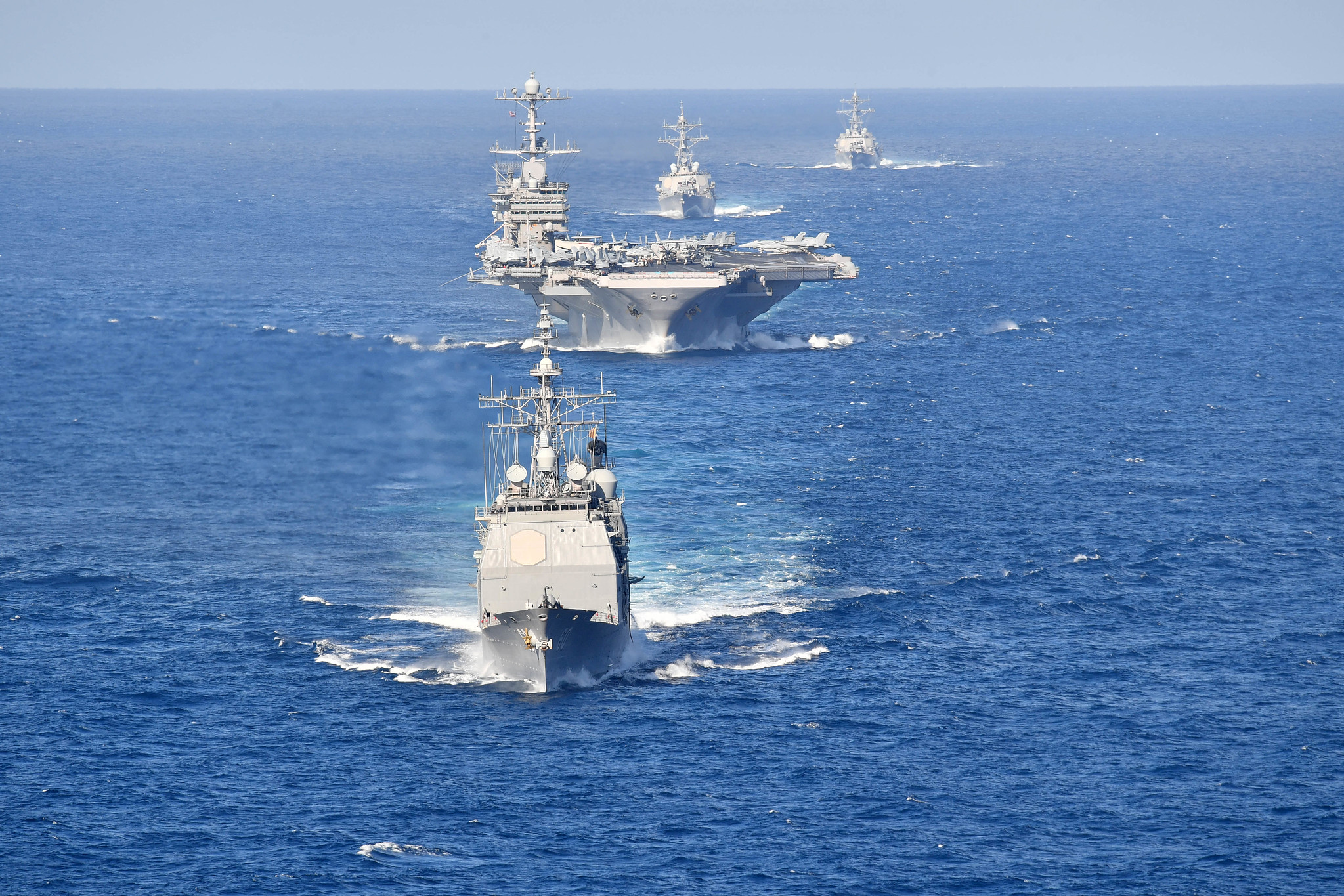By PAUL MCLEARY
 WASHINGTON: Worried about America’s eroding dominance at sea, the Pentagon has been running through a series of war games to shake out a plan to stay ahead of the rapid-fire Chinese military modernization effort.
WASHINGTON: Worried about America’s eroding dominance at sea, the Pentagon has been running through a series of war games to shake out a plan to stay ahead of the rapid-fire Chinese military modernization effort.
“The most destabilizing event in the 21st century is going to be when China can achieve conventional parity at a time and place of its choosing,” Maj. Gen. Tracy King, the Marine Corps’ Director of Expeditionary Warfare said during an online event today. “These war games are reinforcing that fact. So when they are able to do that, and when they can decide whether or not we’re going or fight or not, that’s going to be extremely destabilizing.”
In an attempt to forestall parity, the Navy and Pentagon leadership are working on a force structure plan that includes more unmanned ships, smaller vessels that would be harder to hit, and long-range weapons that could hold Chinese ships at a distance.
Part of the assessment includes a hard look at how the Navy and Marine Corps would get inside the A2/AD defenses China has built up along its coast and the island chains in the South China Sea.
Comments by King and Rear Adm. Paul Schlise, the Navy’s Director of Surface Warfare today give some insight into the Pentagon’s thinking, and where they see the state of play in the emerging race between the United States and China.
“The war game, what it’s showing us is that China’s invested in what they call Assassins Mace, which are weapon systems that are specifically designed to counter us,” King said. “Our joint force is not built to specifically counter them.” But it’s clear US strategists also see some weakness in the Chinese approach. “What that means is they have an A2/AD capability that is fixed, static, expensive, hard to maintain and really effective in one place.”
That is leading the Navy and Marines into looking for ways to distribute their forces in new ways to try and get inside that protective bubble in multiple ways, and in multiple places.
“If we do come to blows with China it’s gonna be very confused for the first 30 or 45 days, and then we must fight in a distributed fashion,” King added.
The Marines are looking to invest more in longer-range missiles that can be quickly emplaced ashore and begin harassing enemy ships while protecting things like US carrier strike groups.
Marine Commandant David Berger has pushed for major changes to happen quickly, and has already won the approval of Defense Secretary Mark Esper, who approved a new Marine force structure plan this spring.
The approval could signal Esper’s thinking about the wider shift for the Navy as well. Berger is cutting off a significant portion of the Corps’ traditional strength — artillery, armor, and rotary wing lift — in favor of a leaner, more precise and faster force.
The missile firings, DoD says, “further destabilize the situation in the South China Sea. Such exercises also violate PRC commitments under the 2002 Declaration on the Conduct of Parties in the South China Sea to avoid activities that would complicate or escalate disputes and affect peace and stability, and call into question its motivations with ongoing negotiations for a Code of Conduct between China and ASEAN.”
“We’re gonna have Marines out there sinking ships,” King said. “You know I’ve even talked to our undersea guys about Marines out there sinking submarines so some of our inside forces can stay hidden and let our adversary worry about me and my hundred guys running around crazy on some island, instead of these capital assets that are really the heart and soul of the joint force.”
The capital assets are aircraft carriers, big deck amphibious ships, and nuclear submarines, all of which would be prime targets in any conflict at sea.
Former acting Secretary of the Navy Thomas Modly ordered a deep dive earlier this year to look at the future of the carrier, given these concerns, an effort then scuttled once Modly resigned in the wake of the COVID outbreak aboard the USS Theodore Roosevelt.
Rear Adm. Paul Schlise suggested today that the carrier, despite some rumblings about the end of their dominance, is here to stay under the emerging new plans. “The Carrier Strike Group remains the premier fighting unit of the Navy, and that force structure is gonna be around for a while,” he said.
While not going into detail about the force structure study, Schlise said the war games taking place to guide it are showing “the value of some of the manned/unmanned force packages that we’re talking about, but also the value of our legacy forces.”
More unmanned ships, smaller frigates, and other relatively inexpensive vessels would allow the Navy to blow past its previous goal of 355 ships, a number Esper has already said is too low.
The admiral backed up that assessment, saying, “everyone speaks to 355 right now and that’s based on some legacy studies. That number, I don’t think, is the right one.”
No comments:
Post a Comment